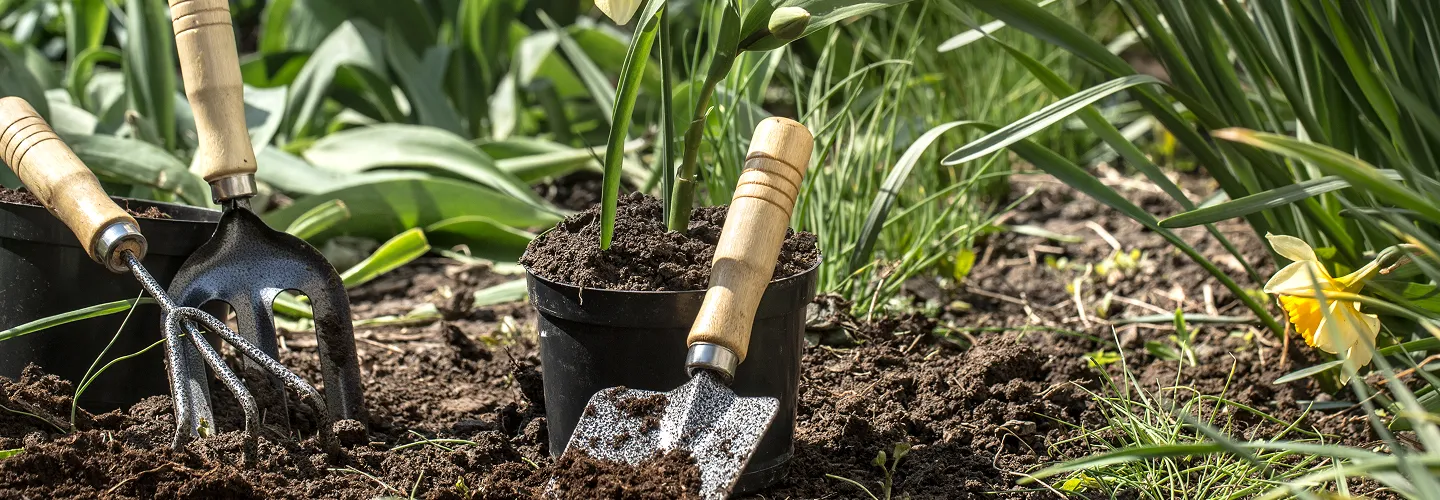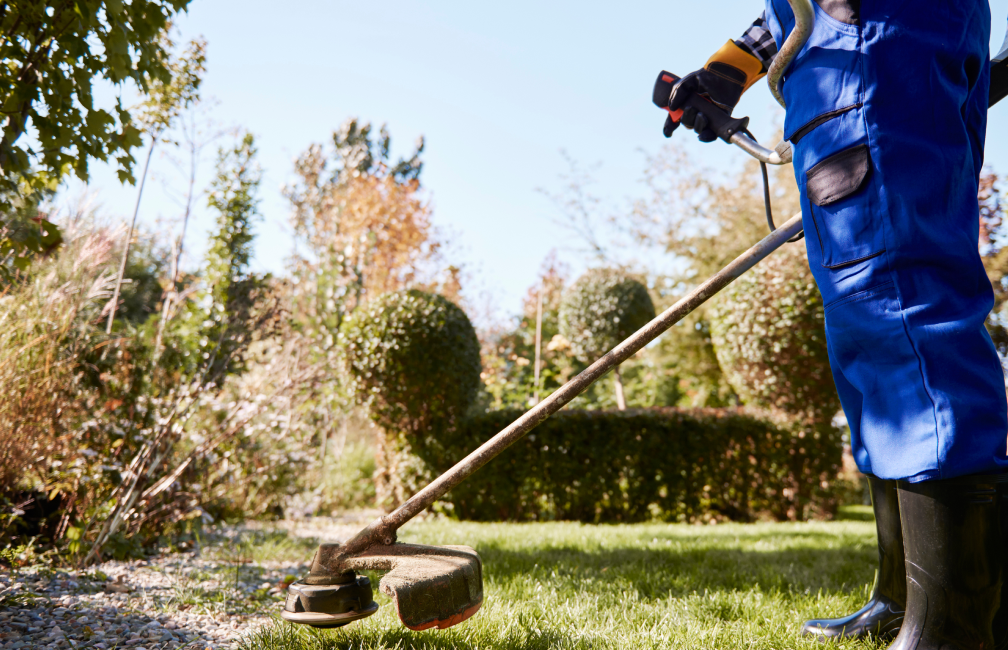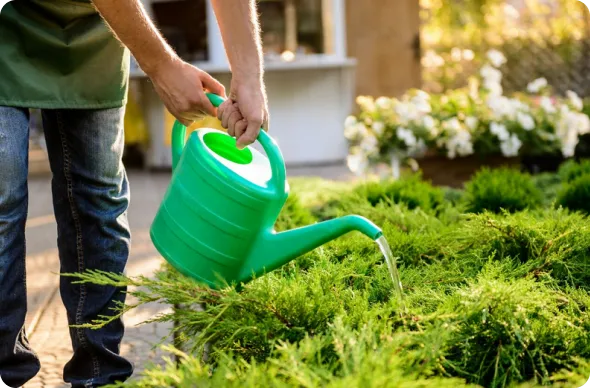
Cohasset Lawn Aeration Services
Choose our expert lawn aeration services to revitalize your grass, improve soil health, and ensure a lush, resilient lawn that stands out in every season.
Get a Free QuoteWhen to Schedule Lawn Aeration in Cohasset, MA – Seasonal Guide
In Cohasset, MA, the best times to schedule lawn aeration are typically in early spring or early fall, when grass is actively growing and can recover quickly. The town’s coastal climate, with its cool, humid springs and mild autumns, creates ideal conditions for aeration during these periods. Homeowners in neighborhoods like Black Rock Beach and the area surrounding Wheelwright Park often notice that lawns respond best to aeration after the last frost in spring or as temperatures begin to cool in September.
Local factors such as Cohasset’s sandy soils, frequent summer droughts, and shaded yards—especially those near the wooded areas off Jerusalem Road—can impact the timing and frequency of aeration. It’s also important to consider municipal guidelines and seasonal updates from the Town of Cohasset when planning your lawn care schedule.
Local Factors to Consider for Lawn Aeration in Cohasset
- Tree density and shade coverage, especially in neighborhoods with mature oaks and maples
- Soil type (sandy or compacted soils common near the coast)
- Precipitation patterns and drought risk during summer months
- Frost dates and temperature fluctuations in spring and fall
- Terrain and drainage, particularly in sloped or low-lying yards
- Municipal restrictions or recommendations for lawn care services
Benefits of Lawn Aeration in Cohasset

Improved Soil Health
Enhanced Grass Growth
Better Water Absorption
Reduced Soil Compaction
Increased Nutrient Uptake
Stronger, Greener Lawns

Cohasset Lawn Aeration Types
Core Aeration
Spike Aeration
Liquid Aeration
Slicing Aeration
Manual Aeration
Aeration with Overseeding
Mechanical Aeration
Our Lawn Aeration Process
Site Evaluation
Preparation
Core Aeration
Cleanup
Post-Aeration Review
Why Choose Cohasset Landscape Services

Cohasset Homeowners Trust Us
Expert Lawn Maintenance
Reliable Seasonal Cleanups
Professional Team
Competitive Pricing
Personalized Service
Satisfaction Guarantee
Contact Cohasset's Department of Public Works for Soil Core Disposal & Aeration Debris Management
Strategic cultivation of extracted soil plugs following turf perforation procedures represents a fundamental element of responsible landscape stewardship throughout Cohasset, Massachusetts. The town's Department of Public Works has established comprehensive guidelines for organic yard debris processing that significantly impact property owners managing post-aeration materials. Understanding these municipal standards ensures regulatory compliance while promoting environmentally sound soil cultivation practices across this Norfolk County South Shore coastal community, renowned for its rocky terrain and prestigious maritime estates.
Cohasset Department of Public Works
41 Highland Avenue, Cohasset, MA 02025
Phone: (781) 383-4100
Official Website: Department of Public Works
Town officials recommend allowing extracted plugs to naturally decompose on lawn surfaces, returning valuable organic compounds and essential mineral nutrients to the soil ecosystem. When removal becomes necessary due to excessive accumulation, property owners must utilize biodegradable paper containers exclusively, avoiding synthetic alternatives that violate Massachusetts General Law Chapter 111, Section 150A. Effective management strategies include allowing plugs to air-dry 48-72 hours before redistributing through mowing operations, staging collected materials away from coastal drainage systems and marine buffer zones, thoroughly cleaning hard surfaces to prevent soil migration into storm infrastructure, and coordinating with transfer station schedules for proper composting. This approach proves especially beneficial for Cohasset's thin, rocky soils that require organic supplementation to improve structure and counteract salt exposure effects.
Understanding Soil Compaction in Cohasset's Coastal Bedrock Outcrops and Marine Terrace Formations
Cohasset's distinctive geological composition encompasses coastal bedrock outcrops interspersed with shallow glacial till deposits and marine terrace formations, creating formidable soil management challenges throughout this prestigious South Shore coastal community. According to USDA Web Soil Survey documentation, predominant soil classifications include Hollis-Chatfield-Rock outcrop complexes where bedrock approaches the surface, Gloucester fine sandy loam over marine clay substrates, and scattered Paxton and Woodbridge fine sandy loams in deeper glacial deposits. Coastal areas feature Beaches and Dune land complexes with Windsor and Hinckley sandy soils on marine terraces.
The rocky outcrop formations create exceptionally shallow soil profiles over impermeable bedrock that severely restrict root penetration and water movement, conditions intensified by concentrated foot traffic from estate maintenance and recreational activities. Marine terrace deposits provide superior drainage yet develop surface crusting from salt spray accumulation and coastal wind exposure that impede water infiltration and oxygen exchange. These challenging conditions are further complicated by Cohasset's undulating topography that channels runoff on slopes while creating waterlogged conditions in bedrock depressions.
University of Massachusetts Extension Center for Agriculture, Food and the Environment
161 Holdsworth Way, Amherst, MA 01003
Phone: (413) 545-2766
Official Website: University of Massachusetts Extension
These environmental stressors manifest as persistent standing water in shallow depressions despite coastal proximity, extreme soil resistance indicating hardened salt-affected layers, severe turf deterioration during winter salt exposure periods, and widespread moss establishment where salt accumulation creates anaerobic conditions. Professional aeration becomes indispensable when conventional maintenance proves inadequate, with rocky areas typically requiring annual autumn applications using specialized equipment designed for shallow soil profiles, while sandy coastal zones benefit from biennial treatments paired with organic amendments.
Cohasset Conservation Commission Guidelines for Core Aeration Near Protected Coastal Ecosystems
Environmental protection requirements substantially influence lawn aeration operations throughout Cohasset, particularly adjacent to Cohasset Harbor, Little Harbor, Gulf River, Bound Brook, Whitney & Thayer Woods, and extensive salt marsh complexes that define this coastal community's pristine ecological character. The Cohasset Conservation Commission enforces stringent buffer zone restrictions prohibiting mechanical soil disturbance within 100 feet of certified wetland boundaries and coastal bank areas, as mandated by the Massachusetts Wetlands Protection Act.
Cohasset Conservation Commission
41 Highland Avenue, Cohasset, MA 02025
Phone: (781) 383-4100
Official Website: Conservation Commission
Property owners developing aeration plans must secure written authorization when operating within designated buffer zones or environmentally sensitive coastal areas. The commission requires comprehensive site documentation showing wetland boundaries, coastal bank delineations, proposed aeration locations, and thorough erosion prevention measures preventing soil displacement into protected marine waters. Timing restrictions apply during shorebird nesting seasons and marine spawning periods, typically limiting mechanical operations between March 15 and August 31 to protect sensitive coastal ecosystems and migratory bird populations utilizing Cohasset's position along the Atlantic flyway. Special coordination becomes necessary near Whitney & Thayer Woods where Trustees of Reservations maintains jurisdiction, requiring additional environmental review for activities near this significant conservation property.
Cohasset's Implementation of Massachusetts Soil Health Regulations for Aeration Operations
Massachusetts soil health regulations establish comprehensive standards for mechanical soil management practices, including core aeration operations conducted throughout Cohasset's extreme coastal environment. These regulations require adherence to best management practices designed to protect marine water quality and prevent soil erosion during aeration activities, while supporting municipal environmental protection objectives in this community where soil management directly impacts both residential landscapes and sensitive coastal ecosystems.
Massachusetts Department of Environmental Protection
One Winter Street, Boston, MA 02108
Phone: (617) 292-5500
Official Website: Massachusetts Department of Environmental Protection
Massachusetts Department of Agricultural Resources
251 Causeway Street, Suite 500, Boston, MA 02114
Phone: (617) 626-1700
Official Website: Massachusetts Department of Agricultural Resources
Implementation emphasizes timing restrictions, equipment specifications, and post-aeration stabilization requirements ensuring environmental protection while supporting effective coastal soil management. Operations must avoid frozen or waterlogged conditions, utilizing specialized equipment designed for shallow, rocky soil profiles and salt-affected substrates. Primary benefits include enhanced water infiltration through salt-crusted surface layers, improved leaching of accumulated marine salts from restricted root zones, reduced surface compaction from estate maintenance traffic, and support for salt-tolerant turf establishment in challenging oceanfront growing conditions.
Post-Aeration Stormwater Management in Compliance with Cohasset's MS4 Program
Cohasset's Municipal Separate Storm Sewer System (MS4) program establishes specific requirements for managing stormwater runoff following lawn aeration activities, particularly in developed coastal areas where soil disturbance could contribute to water quality degradation in Massachusetts Bay and regional marine ecosystems. The program aligns with federal Clean Water Act mandates while addressing local watershed protection priorities for marine water quality and coastal habitat preservation.
U.S. Environmental Protection Agency, Region 1
5 Post Office Square, Boston, MA 02109
Phone: (617) 918-1111
Official Website: U.S. Environmental Protection Agency, Region 1
Post-aeration stormwater management requires immediate stabilization of disturbed soil surfaces through salt-tolerant overseeding, organic mulching, or temporary erosion control measures specifically designed for coastal environments. Property owners must prevent soil particles from entering storm drainage systems during the critical establishment period, particularly important on this rocky peninsula where runoff directly impacts marine waters and commercial shellfish beds. The EPA NPDES permit system governs municipal compliance while providing enforcement mechanisms for violations. Weather monitoring becomes essential, with contractors postponing operations during predicted storm events using National Weather Service Boston marine forecasting data.
What Neighborhoods Do We Serve Throughout Cohasset, MA?
Our specialized expertise encompasses Cohasset's distinctive coastal neighborhoods, each presenting unique soil management challenges requiring expert local knowledge based on marine exposure and geological characteristics.
Cohasset Village & Historic Harbor District: Surrounding the picturesque village center and historic Cohasset Harbor, this area features properties with Gloucester fine sandy loam over marine clay substrates, complicated by centuries of maritime development and constant salt spray exposure. Properties near the harbor experience chronic compaction from pedestrian traffic and utility installations, requiring annual deep-core aeration with specialized salt-resistant equipment while carefully navigating shallow soil profiles and extensive underground infrastructure.
Jerusalem Road & Beechwood Estate Corridor: These prestigious residential areas feature properties with Hollis-Chatfield-Rock outcrop complexes, characterized by extremely shallow soil profiles over granite bedrock. Estate properties require specialized aeration techniques addressing both shallow growing medium limitations and salt exposure, often involving careful equipment selection to avoid bedrock damage while maximizing cultivation benefits in restricted root zones.
Little Harbor & Atlantic Avenue Waterfront Properties: Properties directly fronting Little Harbor and the Atlantic Ocean encompass coastal barrier deposits subject to extreme salt spray and storm surge impacts. These premier waterfront locations experience persistent compaction from maintenance activities combined with salt accumulation, requiring annual deep-core aeration using equipment specifically engineered for harsh marine environments, followed by immediate application of salt-tolerant seed mixtures.
Whitney & Thayer Woods Conservation Interface: Properties adjacent to this significant 824-acre Trustees of Reservations preserve feature mixed glacial deposits with conservation management requirements and recreational use impacts. Aeration requires coordination with Trustees management and specialized timing to address landscape needs while preventing impact to sensitive conservation ecosystems through comprehensive environmental compliance measures.
Sandy Beach & Black Rock Coastal Recreation Areas: These iconic oceanfront areas encompass properties with Beaches and Dune land complexes subject to extreme coastal exposure and recreational traffic. Properties experience severe compaction from pedestrian use combined with constant salt accumulation and wind stress, requiring specialized aeration approaches focusing on sand stabilization and salt leaching using low-impact equipment suitable for fragile coastal environments.
North Cohasset & Beechwood Cemetery Historic District: This area encompasses properties with varied glacial deposits and historic landscape preservation requirements, complicated by mature specimen trees and cultural resource protection needs. Properties often require specialized aeration approaches that preserve historic landscape architecture while addressing compaction from decades of maintenance activities and root competition from established heritage trees.
Cohasset Municipal Bylaws for Core Aeration Equipment Operation & Noise Control
Municipal noise ordinances significantly impact lawn aeration service scheduling throughout Cohasset, with specific regulations governing equipment operation hours and sound level limitations in residential areas. Town bylaws typically restrict mechanical lawn care activities to weekday hours between 7:00 AM and 6:00 PM, with weekend operations limited to 8:00 AM through 5:00 PM to minimize neighborhood disturbances in this prestigious coastal community where residential tranquility and wildlife habitat protection require careful consideration.
Cohasset Building Department
41 Highland Avenue, Cohasset, MA 02025
Phone: (781) 383-4100
Official Website: Building Department
Cohasset Board of Health
41 Highland Avenue, Cohasset, MA 02025
Phone: (781) 383-4100
Official Website: Board of Health
Equipment specifications require compliance with EPA emission standards and Massachusetts noise pollution regulations, particularly near schools, healthcare facilities, and prestigious residential areas throughout the community. Professional contractors must maintain current licensing and insurance documentation while demonstrating competency in local regulatory requirements governing coastal soil management activities. Best practices include scheduling autumn aeration as optimal timing while avoiding major storm seasons and shorebird nesting periods, coordinating with tidal schedules and weather forecasts to ensure safe access and working conditions, utilizing specialized salt-resistant equipment appropriate for shallow, rocky soil conditions, implementing comprehensive erosion control on coastal bluffs above marine waters, and timing operations to avoid peak summer recreational periods when harbor traffic and tourism activities reach maximum intensity throughout this distinguished South Shore coastal destination.